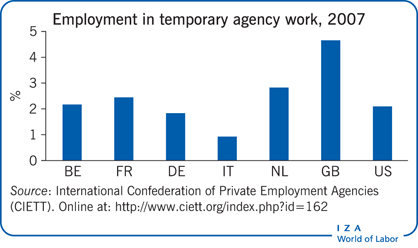Elevator pitch
Temporary agency work has expanded in most advanced economies since the 1990s, but its growth has been controversial. Some argue that these jobs offer experience and contact with potential employers, serving as a path to regular employment, particularly for low-skilled workers. Others view them as traps, fostering low-wage, unstable employment and providing little experience and few contacts.

Key findings
Pros
For some groups, such as immigrants, temporary agency work may give workers an opportunity to demonstrate their ability and so be a stepping-stone to regular employment, particularly during times of low unemployment.
If the unemployed have few alternatives, signing up with a temporary agency may improve employment prospects and earnings in the short term.
Temporary agencies may be a pathway for some to fairly high-paying jobs, such as those in manufacturing.
Cons
Temporary agency work usually is associated with lower earnings and less stable employment.
Temporary agency work generally is not a stepping-stone to regular, open-ended contracts, and it does not improve employment rates and earnings over the medium and long terms.
Taking temporary agency work may hamper some workers’ ability to make the transition to a regular job and may reduce subsequent employment and earnings.
In Europe, fixed-term contracts provide workers with better opportunities for upward mobility than temporary agency work.